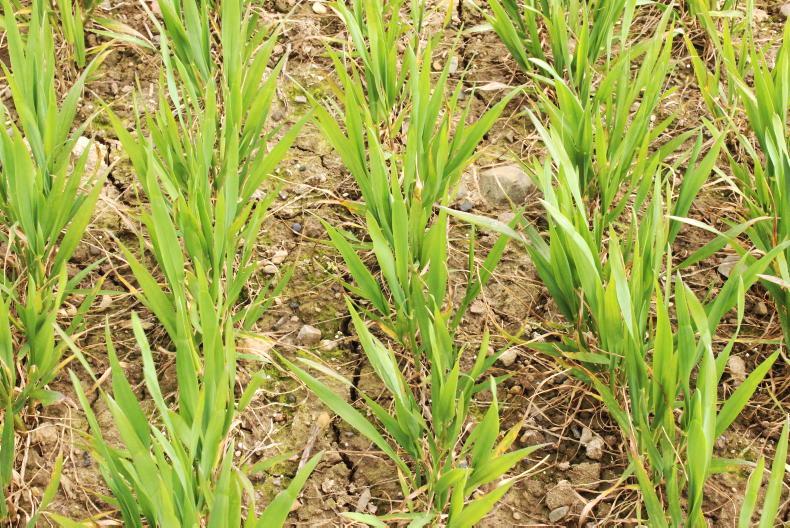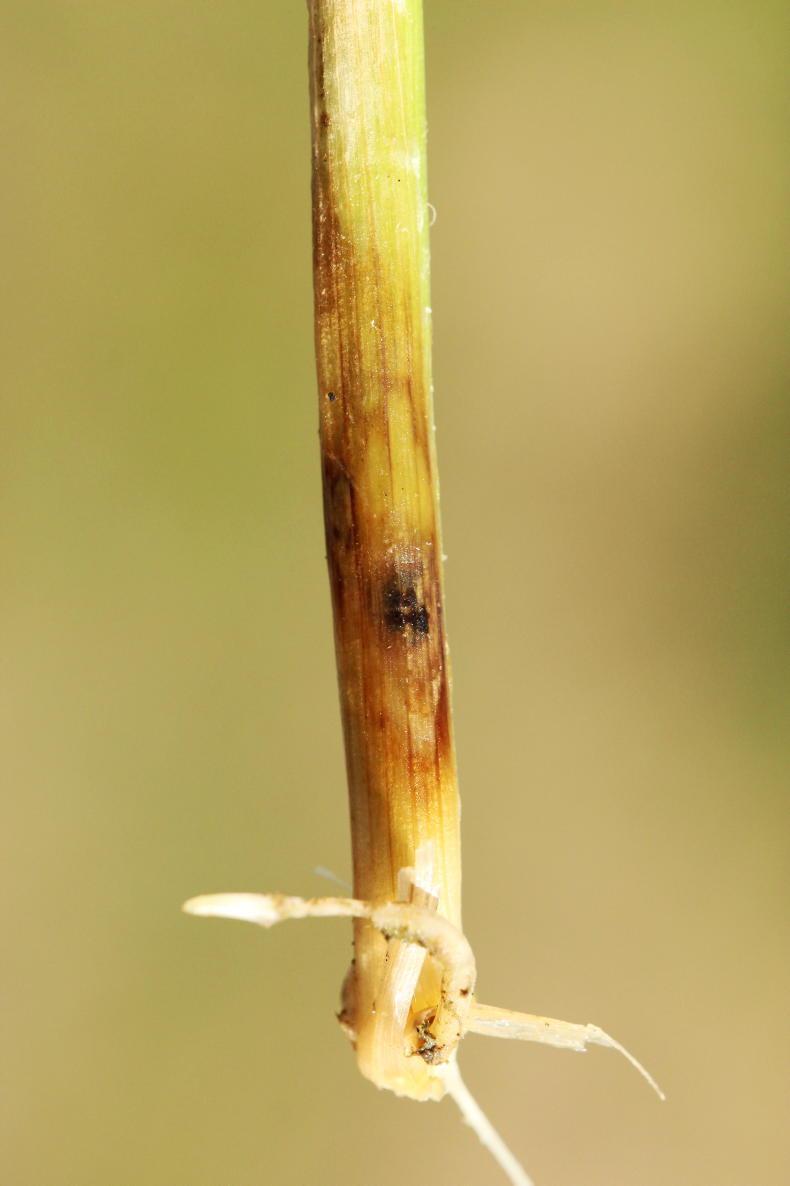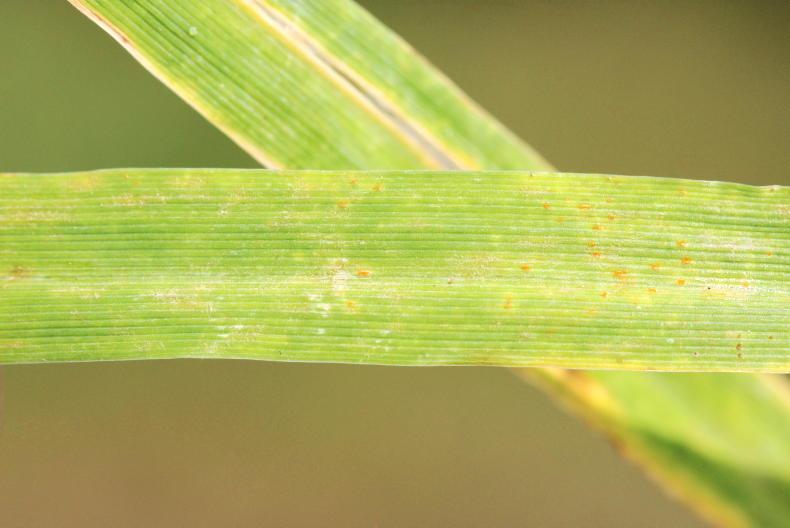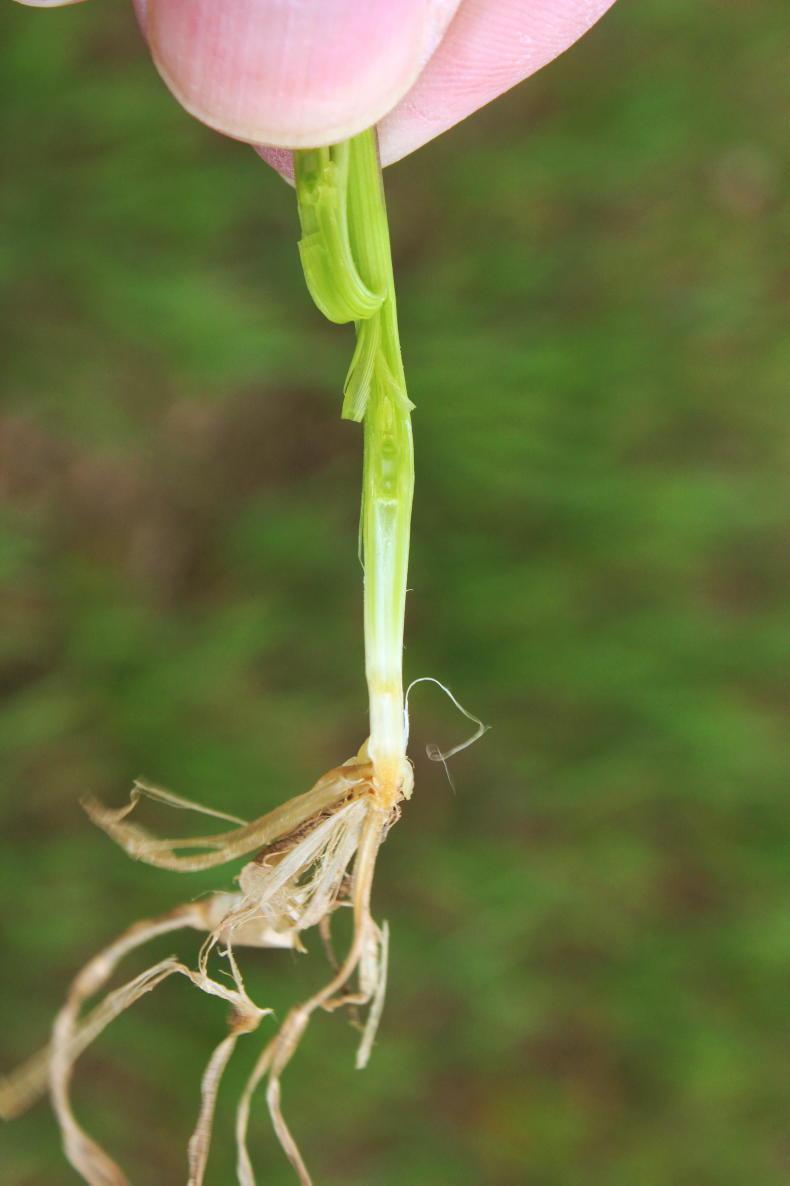Last weekend, I was out in some crops across north Dublin, Meath and Kildare. Most wheat crops were generally at GS30 but many were still shy of GS31. An occasional wheat crop was more advanced, with the first node already present.
Quite a number of wheat crops were still wearing their winter coat and looking a bit hungry as new vegetation had not yet cloaked the older foliage. This was made more obvious by the crops that already showed a greener colour and a bigger canopy.
There was no foliar disease of any consequence in the crops I visited but there was a bit of septoria evident. Eyespot was quite easy to find in some wheat and barley crops, but not in every crop. However, it was prevalent where it was evident.

A number of wheat crops continue to show a relatively hungry look, both in terms of colour and the amount of leaf present.
The crops I visited were generally free of weeds, with the exception of a few buttercup and groundsel.
However, some crops had a combination of wild oats or volunteer oats, or both.
One particular wheat crop had very small wild oat plants (relative to the wheat) and it looked like they may have been hit with a herbicide last backend but not killed.
The other thing that was very unusual about these weak plants was that they had a lot of mildew on their leaves and that is not common on wild oats.

An eyespot lesion developing on a winter barley stem.
One wheat crop certainly had an amount of volunteer oats present but there were also wild oats in that field and they were not easily distinguishable.
Mildew and brown rust
Winter barley crops showed a bit more variability, which is not uncommon. One field was a very dense and squat crop of a six-row variety which had a really strong grip in the ground.
Individual stems varied between GS32 (two nodes) and GS37 (flag leaves now visible).
Eyespot was easily found in this crop and some lesions had penetrated through a few leaf sheath layers already.

Postules of brown rust alongside remnants of earlier mildew on a winter barley leaf.
Old mildew and a low level of brown rust were also obvious on more recent leaves. Neither was an immediate problem but both need to be watched.

Coming up to GS31 on a winter wheat mainstem.
Oilseed rape is the crop that was most visual and also the most variable. All crops are in, or coming into, flower now but there is considerable variability both between and within crops.
One crop which was obviously strip-till planted early was in heavy flower, while many others were only coming into full flower.
There were also very many crops which were only partly in flower as headlands or bigger patches in fields were still only at the green bud stage while other parts of the same field were in strong flower.
These later areas may have been damaged by slugs or grazed by pigeons, or possibly both.
Last weekend, I was out in some crops across north Dublin, Meath and Kildare. Most wheat crops were generally at GS30 but many were still shy of GS31. An occasional wheat crop was more advanced, with the first node already present.
Quite a number of wheat crops were still wearing their winter coat and looking a bit hungry as new vegetation had not yet cloaked the older foliage. This was made more obvious by the crops that already showed a greener colour and a bigger canopy.
There was no foliar disease of any consequence in the crops I visited but there was a bit of septoria evident. Eyespot was quite easy to find in some wheat and barley crops, but not in every crop. However, it was prevalent where it was evident.

A number of wheat crops continue to show a relatively hungry look, both in terms of colour and the amount of leaf present.
The crops I visited were generally free of weeds, with the exception of a few buttercup and groundsel.
However, some crops had a combination of wild oats or volunteer oats, or both.
One particular wheat crop had very small wild oat plants (relative to the wheat) and it looked like they may have been hit with a herbicide last backend but not killed.
The other thing that was very unusual about these weak plants was that they had a lot of mildew on their leaves and that is not common on wild oats.

An eyespot lesion developing on a winter barley stem.
One wheat crop certainly had an amount of volunteer oats present but there were also wild oats in that field and they were not easily distinguishable.
Mildew and brown rust
Winter barley crops showed a bit more variability, which is not uncommon. One field was a very dense and squat crop of a six-row variety which had a really strong grip in the ground.
Individual stems varied between GS32 (two nodes) and GS37 (flag leaves now visible).
Eyespot was easily found in this crop and some lesions had penetrated through a few leaf sheath layers already.

Postules of brown rust alongside remnants of earlier mildew on a winter barley leaf.
Old mildew and a low level of brown rust were also obvious on more recent leaves. Neither was an immediate problem but both need to be watched.

Coming up to GS31 on a winter wheat mainstem.
Oilseed rape is the crop that was most visual and also the most variable. All crops are in, or coming into, flower now but there is considerable variability both between and within crops.
One crop which was obviously strip-till planted early was in heavy flower, while many others were only coming into full flower.
There were also very many crops which were only partly in flower as headlands or bigger patches in fields were still only at the green bud stage while other parts of the same field were in strong flower.
These later areas may have been damaged by slugs or grazed by pigeons, or possibly both.











 This is a subscriber-only article
This is a subscriber-only article










SHARING OPTIONS: